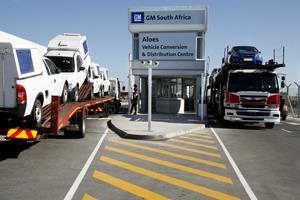
Increasingly, supply chain visibility is not an option or extra but something required by law. From President Biden’s Inflation Reduction Act making tax credits for consumers contingent on material and manufacturing origins, to global track and trace efforts including environmental levies and ‘handshake’ documentation like Mexico’s Carta Porte customs passport, being able to track and document where goods are and where they are going is a legal necessity.
There are huge benefits to visibility, however. Beyond ensuring legitimacy, the way to withstand ongoing insecurity is in having clear visibility over the whole supply chain, said experts at Automotive Logistics and Supply Chain Global.
General Motors’ executive director of global logistics and containerisation, Edgard Pezzo, said that the COVID-19 crisis had prompted a new focus on following exact movements across the supply chain. “Since the start of the pandemic, I think that we have learned a lot in terms of how to work internally cross-functionally between logistics, manufacturing, finance and all the other areas. That has really proven to increase a lot of our resiliency internally.”
However, Pezzo said, the visibility had to go beyond GM’s own processes and extend to tier suppliers and logistics handlers. “How we really start working and increasing enhancing our partnership with our logistics providers, that is one thing that I think that I improved a lot, our resilience as well.” The point, Pezzo said, was to achieve full knowledge of parts and vehicle movements, emphasising the importance of end-to-end visibility. ”That’s one thing that we have we started invested in last year and we are going to continue investing on that.”
It’s not just an issue for an OEM like GM, however. At the IAC Group, chief supply chain officer Kelly Bysouth said that gaining visibility had been an essential transformation, not only of internal processes but over options available in the broader logistics industry. ”Breaking down the silos among the different functions, whether it be manufacturing, procurement, supply chain, logistics to make seamless and quick decisions was absolutely critical. Having very strategic relationships with key logistics partners was also very critical and there’s not one size fits all, as everybody knows. So you have to have your normal logistics providers but then you also have to have relationships with premium providers and ocean providers to be able to make the quickest and most efficient and effective choices when you’re in a critical position.”
Being able to make choices when a crisis hits is a huge benefit to visibility, Bysouth said and that comes down to having access and analytics tools to make use of data. ”One one other thing that I think was absolutely key for us at IAC that we worked on a lot during the last two years was to better use the data that we have at our disposal to make good decisions. So really taking the mass amounts of data that we all deal with on a daily basis and manipulating that data and serving it up in a way that helps us to make decisions more efficiently and effectively andanalyse trade offs, potentially give that data to our strategic partners, whether it be our suppliers or our logistics providers to help us move things where they need to be is as effectively as possible.”
DSV’s director of its electrification and mobility competence centre, Eva Ames, said that visibility also had to be in terms of seeing how the industry was changing. New materials and processes are needed for electric vehicles and both analysing what has worked in the past and how it can be adapted to the future were crucial, she said.
”How do we actually evaluate what’s happening from a historic perspective and figure out how to apply that to the future? Are the goals for supply chain different now?” Asked Ames. ”Because the products that we’re making are different and because the priorities are different and being able to have partnership beyond just having someone to call because there’s a crisis and you need someone to help you solve that today but also inspire some change for the future and provide a view of resiliency that goes beyond just being able to react, being able to predict and strategically develop what you want to do in the future, which might be very different than your goals from the past.”
Disruptions are not going to lessen or go away, said James C Williams, vice president of global key accounts and automotive verticle leader for North America at CEVA Logistics. The lessons of the last few years have to translate to resilience built in to supply chains, via oversight.
“We had to change our mindset,” said Williams. ”We had to realize that disruptions are coming more frequently and they come in sooner. In the past where we were looking to be lean and just focus on waste, now we had to change the goals to start to think about agility and flexibility and not so much look at the product in the individual vacuum, but study the supply chain and its totality and understand where the trade offs would come.
“Once you’ve done that, then applying the proper tools that create visibility that will allow you to gain the ability to make decisions quicker from dynamic mode changes, inventory stocking policies, trade offs, and transportation and inventory stocking policies then started to become more important. So truly understanding the supply chain and responding to it versus individual products became more importance on our organization ”


